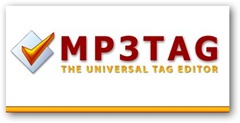A vast array of software is available to support your podcasting requirements; some programs offer one stop integrated solutions to all your podcasting needs, while others fill more specific niches. However, every piece of software that you need in order to record and produce a professional, quality podcast is readily available free of charge.
Acquiring the Audio
No matter what software you choose to help create and produce your podcasts, you will first have to get your audio into the computer. How you choose to do this is entirely up to you, but is likely to depend on what level of audio quality you want and your budget. At the most basic level you could use your computer’s in-built microphone, but for a reasonable degree of quality you will want a semi-decent external microphone.
1. Audacity – Audio Recorder and Editor
2. WinLAME – Audio Encoder
 Once your audio has been recorded and edited (preferably in WAV format) you will need to convert it into a suitable podcast format. The universally accepted audio file format for podcasts is MP3. WinLAME is an excellent piece of free podcasting software designed to convert WAV files into the podcast friendly MP3 format.
Once your audio has been recorded and edited (preferably in WAV format) you will need to convert it into a suitable podcast format. The universally accepted audio file format for podcasts is MP3. WinLAME is an excellent piece of free podcasting software designed to convert WAV files into the podcast friendly MP3 format.
3. Mp3Tag – ID3 Tag Editor
 Now that you have your podcast MP3 audio file and some suitable artwork for its cover, you will need to embed the artwork into the MP3 file and add some additional tags that can be displayed by the listener’s playback device.
Now that you have your podcast MP3 audio file and some suitable artwork for its cover, you will need to embed the artwork into the MP3 file and add some additional tags that can be displayed by the listener’s playback device.